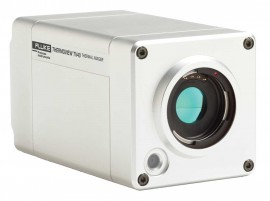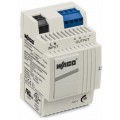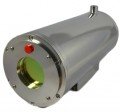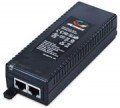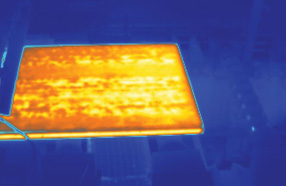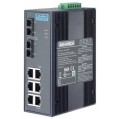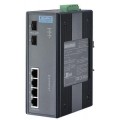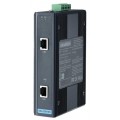Fluke Process TV46-L-0-1 ThermoView TV40 Thermal Imager, 640 x 480, 9Hz
Model: TV46-L-0-1
Fluke Process TV46-L-0-1 ThermoView TV40 Thermal Imager, 640 x 480, 9Hz
Model: TV46-L-0-1
This is a noncontact, highly sensitive infrared thermal imaging camera with motorized and software controlled variable focus capability. The ThermoView® Series infrared cameras are rugged and designed to be able to withstand demanding industrial environments. External add-on lenses are not water tight and have a degraded IP54 rating.
This is a noncontact, highly sensitive infrared thermal imaging camera with motorized and software controlled variable focus capability. The ThermoView® Series infrared cameras are rugged and designed to be able to withstand demanding industrial environments. External add-on lenses are not water tight and have a degraded IP54 rating.
Discontinued!
This product has been discontinued and is no longer available.
There is no direct replacement, however we recommend the:
Not what you're looking for? Let’s do a search and help you find what you need.
Fluke Process TV46-L-0-1 Offers
Monitor your site and equipment for safety with the rugged thermal imager that provides process control, monitoring, and archiving capabilities for industrial process applications. Customizable and designed for the harshest applications, the thermal imaging camera allows users to view infrared and visible images, program areas of interest, data remotely, and more.
With additional software features and advanced analytical tools, the software offers control of multiple parts of the process. Providing independent, continuous, intermittent, and remote evaluation of the temperature condition, the software enables data to be accessed at any time and any place.
Features
- I/O alarming capabilities
- Communication to other devices through Ethernet/IP
- System health and automatic communication re-connection capabilities
- Recording of trend and sequence files for easy playback
- Simultaneous condition monitoring/alarming and offline viewing available
- Remote project loading from external devices for automation applications
- Wide temperature range: 14 to 2192°F (-10 to 1200°C)
- Rugged aluminum housing, IP67 rated
- Ambient temperatures to 392°F (200°C) with high temperature enclosure
- Air purge and outdoor enclosure accessories available
- Sighting options: remote motorized focus and simultaneous thermal and visible sighting for easy alignment
- 640 x 480 focal plane array
- GigE Vision interface
- LAN/ethernet with PoE for communication with the camera provides access to PoE, ethernet, webserver, and ThermoView Software
- ThermoView software for industrial and factory automation applications
Applications
- Fixed, in-line thermal imaging for 24/7 monitoring
- Equipment monitoring
- Manufacturing process automation
- Industrial process
Fluke Process TV46-L-0-1 Specifications
| Sighting | Thermal + Visible light Camera (640 x 480) |
| Measuring Range | 14 to 2192°F (-10 to 1200°C) |
| Measurement Accuracy | ±2°C or ±2% of reading |
| Number of Pixels | 640 x 480 |
| Frame Rate | 9 Hz |
| Spectral Range | 8 to 14 μm |
| Detector | Uncooled focal plane array |
| Field of View | Horizontal 24 x 18° |
| Add on Lens Options | 0.75X wide lens (32° x 24°) 2X lens (12° x 9°) 4X lens (6° x 4.5°) Macro lens |
| Focus Range | Infrared: 15 cm to ∞ (motorized remote focus) Visible light: 60 cm to ∞ |
| Camera Frame Time | 9 or 60 frames/sec (must be specified at the time of ordering) |
| Emissivity Correction | 0.10 to 1.00 |
| Interface | GigE Vision |
| LED Display | Power supply indication, system error codes |
| Operating Temperature | 14 to 122°F (-10 to 50°C) |
| Storage Temperature | -4 to 122°F (-20 to 50°C) |
| Humidity | 10 to 95% non-condensing |
| Power Supply | 12 to 26 VDC, ±5% Power over Ethernet (IEEE 802.3at) |
| Power Consumption | Typical: 8 W Maximum: 13 W |
| Shock Resistance | IEC 60068-2-27 (mechanical shock): 50 g, 6 ms, 3 axis |
| Vibration Resistance | IEC 60068-2-26 (sinusoidal vibration): 3 g, 11 to 200 Hz, 3 axis |
| Environmental Protection | IP67 NEMA 4 |
| Dimensions | Approximately 3.25 x 3.25 x 6.22" (83 x 83 x 158 mm) |
| Weight | Approximately 2.2 lbs (1 kg) |
What's included with the Fluke Process TV46-L-0-1
- IR Camera
- Metal Sealing Connector Caps
- Quickstart Guide
- User Manual
Top applications related to the Fluke ThermoView TV40
Achieving 100% quality on automobile window heating grids with fixed thermal imaging
The automotive industry boasts one of the most sophisticated—and increasingly complex—supply chains in manufacturing. Automakers, also referred to as OEMs, rely on suppliers of varying sizes to manufacture components that are assembled into a final vehicle. Strict quality requirements ensure that materials and manufactured systems, from Tier 3 to Tier 1 suppliers, result in a car that is safe to drive.
Fixed thermal imaging is a cost-effective way for suppliers to ensure that parts delivered to automotive companies meet those stringent quality requirements.
Read More about window heating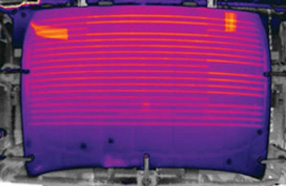
Bad defroster grid during isotherm testing
Using fixed thermal imaging to identify dangerous hot spots in coal or biomass
Continuous coal and biomass monitoring is an important step in understanding the conditions leading to a fire. Hot spots can flare-up devastating spontaneous combustion, potentially causing thousands of dollars in material loss, dangerous work conditions, and difficult extinguishing options. Prevention is becoming readily available with cost-effective continuous thermal image monitoring as a method for early warning.
Learn More about hot spots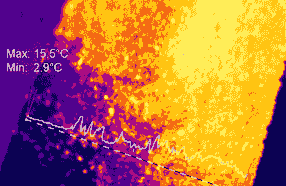
Continuous coal and biomass monitoring with thermal imaging
Apply fixed thermal imaging to ensure your heated car seats score 100 % on quality inspections
The automotive industry features one the most sophisticated–and increasingly complex–supply chains in manufacturing. For newer components, such as heated car seats, strict quality requirements ensure that manufactured materials and systems result in a car that is both safe and comfortable to drive.
Meeting these requirements can be time consuming and, if done incorrectly, can waste valuable production time later in the process; but it doesn’t have to. Fixed thermal imaging is a cost-effective, easy-to-implement way for suppliers to ensure parts are delivered to OEMs with a 100% quality inspection.
Find out More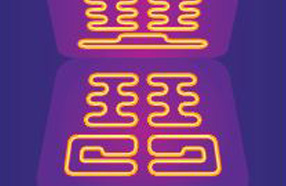
View of your car seat warmer through a thermal imager
Maintain nonstop power plant operations with 24/7 hot spot detection
In recent years, distributed renewable energy sources like wind and solar have made headlines for their significant progress in cost reduction, effectively supplementing the electrical grid with clean power. Even so, most electricity consumed across the globe is produced at centralized plants, ranging from traditional coal power plants to clean hydroelectric facilities. There is a variety of critical equipment involved in the power generation process–which, if it fails, can ultimately disrupt power supplied to the grid, as well as significantly increase costs associated with repairs and re-establishing operations. However, preventing unexpected failures is becoming easier due to the implementation of continuous monitoring with fixed thermal imagers.
Learn More about hot spot detection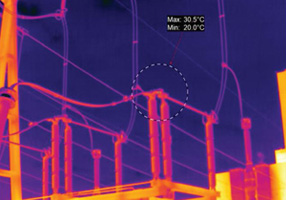
Maintain nonstop power plant operations with hot spot detection
Instantly measure temperature uniformity on hot stamped automotive parts with fixed thermal imaging
Automakers, also referred to as OEMs, rely on suppliers of varying sizes to manufacture components that are later assembled into a final vehicle. When looking at a vehicle’s structural components, hot stamping and press hardening are some of the most integral manufacturing processes. Pair that with strict industry requirements like the CQi-9 heat treat systems assessment and suddenly your team is faced with expensive, time-consuming testing procedures. However, fixed thermal imaging is a cost-effective way for you to ensure that your parts are delivered to OEMs while meeting stringent industry requirements.
Find out More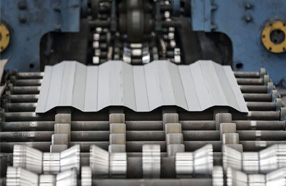
Hot stamping automotive parts
Attain 100% quality on welded plastic automotive parts with fixed thermal imaging
The automotive industry boasts one of the most sophisticated—and increasingly complex—supply chains in manufacturing. Automakers, also referred to as OEMs, rely on suppliers of varying sizes to manufacture components that are assembled into a final vehicle. Strict quality requirements ensure materials and manufactured systems, from Tier 3 to Tier 1 suppliers, result in a car that is safe to drive. When it comes to meeting those stringent quality requirements, suppliers can encounter prohibitive costs that don’t always allow for complete, quality inspections; and fixed thermal imaging is a cost-effective way to ensure these parts are delivered to automakers with 100% quality inspection.
Vibration and Laser welding using the Fluke Process TV40
Find Out More
Vibration and Laser welding using the Fluke Process TV40
Click on a category to view a selection of compatible accessories with the Fluke Process TV46-L-0-1 ThermoView TV40 Thermal Imager, 640 x 480, 9Hz.
Fluke Process A-CB-LT-PS-07 Power Supply Cable, 80°C Maximum, 7.5m (25ft) A-CB-LT-PS-07
The corresponding end of the power supply cable is carried out as a pig tail, to connect to an external power supply device. All three sockets of the M16 connector are wired by a 3-wire supply cable. Just socket 1 (brown wire = GND) and 3 (white wire = +VDC) of the M16 connector must be supplied by external VDC if no PoE (Power over Ethernet) is used, leave the socket 2 (black wire) at the other end unwired. For use with Fluke Process TV40 series thermal imagers.Fluke Process A-CB-LT-RJ45-25 Ethernet Cable, 25m (82ft) A-CB-LT-RJ45-25
For use with Fluke Process TV40 series thermal imagers.Fluke Process A-CB-FO-150 Fiber Optic Cable, 150m (492ft) A-CB-FO-150
For use with Fluke Process TV40 series thermal imagers.Fluke Process A-CB-FO-300 Fiber Optic Cable, 300m (984ft) A-CB-FO-300
For use with Fluke Process TV40 series thermal imagers.Fluke Process A-CB-LT-RJ45-03 Short Ethernet Cable for Junction Box A-CB-LT-RJ45-03
For use with Fluke Process TV40 series thermal imagers.Fluke Process A-CB-LT-PS-25 Power Supply Cable, 80°C Maximum, 25 m (80ft) A-CB-LT-PS-25
The corresponding end of the power supply cable is carried out as a pig tail, to connect to an external power supply device. All three sockets of the M16 connector are wired by a 3-wire supply cable. Just socket 1 (brown wire = GND) and 3 (white wire = +VDC) of the M16 connector must be supplied by external VDC if no PoE (Power over Ethernet) is used, leave the socket 2 (black wire) at the other end unwired. For use with Fluke Process TV40 series thermal imagers.Fluke Process A-CB-LT-PS-50 Power Supply Cable, 80°C Maximum, 50m (160ft) A-CB-LT-PS-50
The corresponding end of the power supply cable is carried out as a pig tail, to connect to an external power supply device. All three sockets of the M16 connector are wired by a 3-wire supply cable. Just socket 1 (brown wire = GND) and 3 (white wire = +VDC) of the M16 connector must be supplied by external VDC if no PoE (Power over Ethernet) is used, leave the socket 2 (black wire) at the other end unwired. For use with Fluke Process TV40 series thermal imagers.Fluke Process A-CB-HT-PS-08 Power Supply Cable, 180°C Maximum, 7.5m (25ft) A-CB-HT-PS-08
The corresponding end of the power supply cable is carried out as a pig tail, to connect to an external power supply device. All three sockets of the M16 connector are wired by a 3-wire supply cable. Just socket 1 (brown wire = GND) and 3 (white wire = +VDC) of the M16 connector must be supplied by external VDC if no PoE (Power over Ethernet) is used, leave the socket 2 (black wire) at the other end unwired. For use with Fluke Process TV40 series thermal imagers.Fluke Process A-CB-HT-PS-10 Power Supply Cable, 180°C Maximum, 10m (33ft) A-CB-HT-PS-10
The corresponding end of the power supply cable is carried out as a pig tail, to connect to an external power supply device. All three sockets of the M16 connector are wired by a 3-wire supply cable. Just socket 1 (brown wire = GND) and 3 (white wire = +VDC) of the M16 connector must be supplied by external VDC if no PoE (Power over Ethernet) is used, leave the socket 2 (black wire) at the other end unwired. For use with Fluke Process TV40 series thermal imagers.Fluke Process A-CB-LT-M12-W08-07 Low-Temperature Multi-Conductor 8 Pin Cable with M12 Connector for Ethernet Communication, 80°C, 7.5m (25ft) A-CB-LT-M12-W08-07
The corresponding end of the cable is equipped with a general RJ45 snap-in connector. The needed power is injected over the existing 8 data wires to supply the imager with power in case PoE (Power over Ethernet) is being used. For use with Fluke Process TV40 series thermal imagers.Fluke Process A-CB-LT-M12-W08-25 Low-Temperature Multi-Conductor 8 Pin Cable with M12 Connector for Ethernet Communication, 80°C, 25m (80ft) A-CB-LT-M12-W08-25
The corresponding end of the cable is equipped with a general RJ45 snap-in connector. The needed power is injected over the existing 8 data wires to supply the imager with power in case PoE (Power over Ethernet) is being used. For use with Fluke Process TV40 series thermal imagers.Fluke Process A-CB-LT-M12-W08-50 Low-Temperature Multi-Conductor 8 Pin Cable with M12 Connector for Ethernet Communication, 80°C, 50m (160ft) A-CB-LT-M12-W08-50
The corresponding end of the cable is equipped with a general RJ45 snap-in connector. The needed power is injected over the existing 8 data wires to supply the imager with power in case PoE (Power over Ethernet) is being used. For use with Fluke Process TV40 series thermal imagers.Fluke Process A-CB-HT-M12-W08-07 High-Temperature Multi-Conductor 8 Pin Cable with M12 Connector for Ethernet Communication, 165°C, 7.5m (25ft) A-CB-HT-M12-W08-07
The corresponding end of the cable is equipped with a general RJ45 snap-in connector. The needed power is injected over the existing 8 data wires to supply the imager with power in case PoE (Power over Ethernet) is being used. For use with Fluke Process TV40 series thermal imagers.Fluke Process A-TV-ENC Outdoor Enclosure with Sunshield and Germanium Window A-TV-ENC
For use with Fluke Process TV40 series thermal imagers. The ThermoView® imager has to be mounted in outdoor environments and an outdoor enclosure ensures weatherproofed installations. It provides a high protection rate, a sunshield, and a temperature controlled heater for cooler environments.Fluke Process A-TV-WC Protective Enclosure, Water Cooled, Air Purged A-TV-WC
For use with Fluke Process TV40 series thermal imagers. If the ThermoView® imager needs to be installed in dirty and hot environments, a protective enclosure with water cooling and air purge fittings is needed to guarantee its protection.Fluke Process A-PS-DIN-24V 24 VDC Industrial Power Supply, DIN Rail Mount, 1.2 A A-PS-DIN-24V
The DIN-rail mount industrial power supply delivers isolated dc power and provides short circuit and overload protection. It can power a single camera, as well as Analog and Digital I/O Modules, and a media converter. For use with Fluke Process TV40 series thermal imagers.Fluke Process A-TV-MB Mounting Base A-TV-MB
The mounting base allows you to easily adapt the ThermoView® imager to any kind of fixture. It is mainly used to fix the ThermoView® imager to swivelling brackets or tripods. The mounting base has 2 inner ¼"–20 holes to be able to fix it to tripods or swivel brackets. For use with Fluke Process TV40 series thermal imagers.Fluke Process A-BR-S Swivel Bracket A-BR-S
The swivel bracket accessory is to mount the ThermoView® imager in a moveable position, to correct in an easy way the pitch and yaw orientation. For a correct imager orientation, you can pitch up to 90° and swivel the imager-sighting axis a full 360°. The base has a single control knob and a split-ball lock, to hold the specific head mount firmly in place. For use with Fluke Process TV40 series thermal imagers.Fluke Process A-CON-FO-RJ45 Fiber Optic to Ethernet Converter A-CON-FO-RJ45
An industrial DIN-rail mounted unmanaged Ethernet switch with 6 RJ45 GBit Ethernet ports and 2 Multi Mode GBit Fiber Optic ports. For use with Fluke Process TV40 series thermal imagers.Fluke Process A-CON-SW 4 Port Gigabit Ethernet Switch A-CON-SW
The A-CON-SW is a 4 port, industrial DIN-rail mounted IEEE 802.3af/at Gigabit PoE+ Injector switch with an extended temperature range between -40 to 75°C (-40 to 167°F). The PoE injector can power attached devices (e. g. IP-cameras) of up to 30W. For use with Fluke Process TV40 series thermal imagers.Fluke Process A-CON-BASICKIT Basic Bus Coupler kit for several In-/Outputs A-CON-BASICKIT
For use with Fluke Process TV40 series thermal imagers. Kit includes: WAGO 750-352 fieldbus coupler module, WAGO 750-602 supply module, & WAGO 750-600 end module.Fluke Process A-CON-16DI Digital-Input Module, 16 Channel A-CON-16DI
The digital input module provides 16 channels. A green LED indicates the switched status of each channel. An optocoupler provides electrical isolation between the bus and the field side. For use with Fluke Process TV40 series thermal imagers.Fluke Process A-CON-16DO Digital-Output Module, 16 Channel A-CON-16DO
The digital output module provides 16 channels. A green LED indicates the switched status of each channel. An optocoupler provides electrical isolation between the bus and the field side. For use with Fluke Process TV40 series thermal imagers.Fluke Process A-CON-2AOC4 Analog Current Out, 2 Loops, 4-20mA A-CON-2AOC4
The analog output module generates output currents ranging from 0/4 to 20 mA for the field. For use with Fluke Process TV40 series thermal imagers.Fluke Process A-CON-2R Relay Output Module, 2 Each A-CON-2R
For use with Fluke Process TV40 series thermal imagers.Fluke Process A-TV-POE2 PoE Injector, 110/220 VAC Input A-TV-POE2
Provides industrial power and acts as a single Ethernet hub (115/230 VAC input). For use with Fluke Process TV40 series thermal imagers.Fluke Process A-TV-POE1 PoE Injector, 110/220 VAC Input A-TV-POE1
Provides power and acts as a single Ethernet hub (115/230 VAC input). For use with Fluke Process TV40 series thermal imagers.Fluke Process FPI 0.75X WIDE LENS Wide Angle Lens, 45° x 34° FPI 0.75X WIDE LENS
For use with Fluke Process TV40 series thermal imagers.Fluke Process FPI 2X LENS 2X Telephoto, 17° x 12.7° FPI 2X LENS
For use with Fluke Process TV40 series thermal imagers.Fluke Process FPI 4X LENS 4X Telephoto, 8.5° x 6° FPI 4X LENS
For use with Fluke Process TV40 series thermal imagers.Fluke Process FPI MACRO LENS Infrared Macro Lens for Infrared Cameras FPI MACRO LENS
For use with Fluke Process TV40 series thermal imagers.Fluke Process TVS ThermoView Software TVS
Welcome to ThermoView, the professional infrared image analysis and reporting system for R&D and process automation environments. Software for use with Fluke Process TV40 series thermal imagers.Fluke Process A-CON-2A-ISO Passive Current Isolator A-CON-2A-ISO
The 2-channel passive isolator filters and electrically isolates 0(4)Ð20 mA analog standard signals, while drawing_power for signal transmission from the input circuit. The connected sensor supplies the passive isolator with the_required power, while powering the connected load. For use with Fluke Process TV40 series thermal imagers.Ask a question about Fluke Process TV46-L-0-1 ThermoView TV40 Thermal Imager, 640 x 480, 9Hz
Fluke Process TV46-L-0-1 Specifications
| Sighting | Thermal + Visible light Camera (640 x 480) |
| Measuring Range | 14 to 2192°F (-10 to 1200°C) |
| Measurement Accuracy | ±2°C or ±2% of reading |
| Number of Pixels | 640 x 480 |
| Frame Rate | 9 Hz |
| Spectral Range | 8 to 14 μm |
| Detector | Uncooled focal plane array |
| Field of View | Horizontal 24 x 18° |
| Add on Lens Options | 0.75X wide lens (32° x 24°) 2X lens (12° x 9°) 4X lens (6° x 4.5°) Macro lens |
| Focus Range | Infrared: 15 cm to ∞ (motorized remote focus) Visible light: 60 cm to ∞ |
| Camera Frame Time | 9 or 60 frames/sec (must be specified at the time of ordering) |
| Emissivity Correction | 0.10 to 1.00 |
| Interface | GigE Vision |
| LED Display | Power supply indication, system error codes |
| Operating Temperature | 14 to 122°F (-10 to 50°C) |
| Storage Temperature | -4 to 122°F (-20 to 50°C) |
| Humidity | 10 to 95% non-condensing |
| Power Supply | 12 to 26 VDC, ±5% Power over Ethernet (IEEE 802.3at) |
| Power Consumption | Typical: 8 W Maximum: 13 W |
| Shock Resistance | IEC 60068-2-27 (mechanical shock): 50 g, 6 ms, 3 axis |
| Vibration Resistance | IEC 60068-2-26 (sinusoidal vibration): 3 g, 11 to 200 Hz, 3 axis |
| Environmental Protection | IP67 NEMA 4 |
| Dimensions | Approximately 3.25 x 3.25 x 6.22" (83 x 83 x 158 mm) |
| Weight | Approximately 2.2 lbs (1 kg) |
What's included with the Fluke Process TV46-L-0-1
- IR Camera
- Metal Sealing Connector Caps
- Quickstart Guide
- User Manual
Top applications related to the Fluke ThermoView TV40
Achieving 100% quality on automobile window heating grids with fixed thermal imaging
The automotive industry boasts one of the most sophisticated—and increasingly complex—supply chains in manufacturing. Automakers, also referred to as OEMs, rely on suppliers of varying sizes to manufacture components that are assembled into a final vehicle. Strict quality requirements ensure that materials and manufactured systems, from Tier 3 to Tier 1 suppliers, result in a car that is safe to drive.
Fixed thermal imaging is a cost-effective way for suppliers to ensure that parts delivered to automotive companies meet those stringent quality requirements.
Read More about window heating
Bad defroster grid during isotherm testing
Using fixed thermal imaging to identify dangerous hot spots in coal or biomass
Continuous coal and biomass monitoring is an important step in understanding the conditions leading to a fire. Hot spots can flare-up devastating spontaneous combustion, potentially causing thousands of dollars in material loss, dangerous work conditions, and difficult extinguishing options. Prevention is becoming readily available with cost-effective continuous thermal image monitoring as a method for early warning.
Learn More about hot spots
Continuous coal and biomass monitoring with thermal imaging
Apply fixed thermal imaging to ensure your heated car seats score 100 % on quality inspections
The automotive industry features one the most sophisticated–and increasingly complex–supply chains in manufacturing. For newer components, such as heated car seats, strict quality requirements ensure that manufactured materials and systems result in a car that is both safe and comfortable to drive.
Meeting these requirements can be time consuming and, if done incorrectly, can waste valuable production time later in the process; but it doesn’t have to. Fixed thermal imaging is a cost-effective, easy-to-implement way for suppliers to ensure parts are delivered to OEMs with a 100% quality inspection.
Find out More
View of your car seat warmer through a thermal imager
Maintain nonstop power plant operations with 24/7 hot spot detection
In recent years, distributed renewable energy sources like wind and solar have made headlines for their significant progress in cost reduction, effectively supplementing the electrical grid with clean power. Even so, most electricity consumed across the globe is produced at centralized plants, ranging from traditional coal power plants to clean hydroelectric facilities. There is a variety of critical equipment involved in the power generation process–which, if it fails, can ultimately disrupt power supplied to the grid, as well as significantly increase costs associated with repairs and re-establishing operations. However, preventing unexpected failures is becoming easier due to the implementation of continuous monitoring with fixed thermal imagers.
Learn More about hot spot detection
Maintain nonstop power plant operations with hot spot detection
Instantly measure temperature uniformity on hot stamped automotive parts with fixed thermal imaging
Automakers, also referred to as OEMs, rely on suppliers of varying sizes to manufacture components that are later assembled into a final vehicle. When looking at a vehicle’s structural components, hot stamping and press hardening are some of the most integral manufacturing processes. Pair that with strict industry requirements like the CQi-9 heat treat systems assessment and suddenly your team is faced with expensive, time-consuming testing procedures. However, fixed thermal imaging is a cost-effective way for you to ensure that your parts are delivered to OEMs while meeting stringent industry requirements.
Find out More
Hot stamping automotive parts
Attain 100% quality on welded plastic automotive parts with fixed thermal imaging
The automotive industry boasts one of the most sophisticated—and increasingly complex—supply chains in manufacturing. Automakers, also referred to as OEMs, rely on suppliers of varying sizes to manufacture components that are assembled into a final vehicle. Strict quality requirements ensure materials and manufactured systems, from Tier 3 to Tier 1 suppliers, result in a car that is safe to drive. When it comes to meeting those stringent quality requirements, suppliers can encounter prohibitive costs that don’t always allow for complete, quality inspections; and fixed thermal imaging is a cost-effective way to ensure these parts are delivered to automakers with 100% quality inspection.
Vibration and Laser welding using the Fluke Process TV40
Find Out More
Vibration and Laser welding using the Fluke Process TV40
Click on a category to view a selection of compatible accessories with the Fluke Process TV46-L-0-1 ThermoView TV40 Thermal Imager, 640 x 480, 9Hz.



